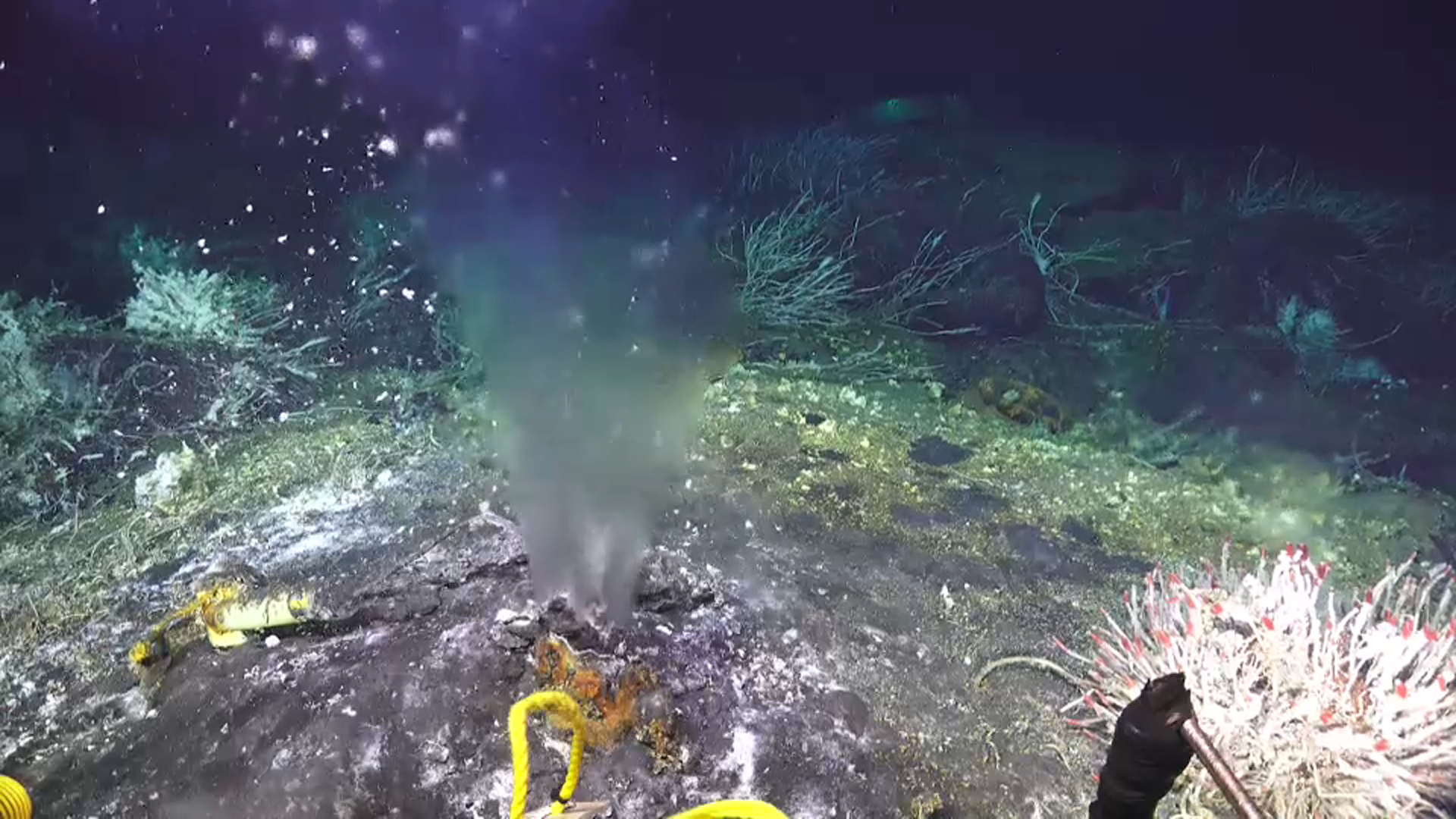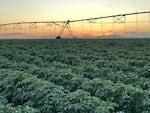
In this video still collected by a remote-operated vehicle named Jason with the Woods Hole Oceanographic Institute in June 2022, superheated water and nutrients from a hydrothermal vent off the Oregon coast supports a wide variety of life.
Courtesy of ROV Jason/WHOI
In this monthly rundown from OPB, we feature the most interesting, wondrous and hopeful science coming out of the Pacific Northwest, from Jes Burns, creator of “All Science. No Fiction.”
And remember: Science builds on the science that came before. No one study tells the whole story.
Life: deep and hot
Deep-sea hydrothermal vents are some of the most unforgiving environments on the planet. Superheated fluid leaves the Earth’s crust and mixes with the near-freezing seawater. Yet there’s growing evidence these volcanic outflows are where life on Earth originated.
Researchers at Portland State University have discovered an astounding array of microbial life thriving at different hydrothermal vent sites around the world. Using genomic analysis, they identified 3,635 different bacteria and archaea. Of that group, at least 500 had never been noted before, and they found evidence of two totally new phyla (a really broad category of life).
In addition, their work showed that these microbes depend on each other for survival — like little underwater communes.
Read the paper in the journal Microbiome.
Heavy metal fusion
Arguably the biggest scientific breakthrough of 2022 was when a laboratory in the United States smashed some nucleuses together and made more energy than it took to do the smashing. The age of nuclear fusion could be officially here, and with it, the promise of clean, nearly unlimited and (eventually) affordable electricity.
Now scientists at the Pacific Northwest National Lab are working to take that incredible scientific advance even further. They’re working to identify materials that can withstand incredibly high temperatures and other extreme conditions, which will be needed to build nuclear fusion reactors. They’re looking to metal alloys made with tungsten, the element with the second highest melting point — nearly 6200 degrees Fahrenheit.
But the materials can’t just be heat resistant. They have to be strong as well. The team examined a particular tungsten alloy that mimics the microscopic structure of mother-of-pearl. They think this material could be optimized and become a good candidate for the fusion reactors of the future.
Read the paper from the journal Scientific Reports.
Every drop counts
As the climate changes, the water available for farmers in the Pacific Northwest is decreasing. This is already disrupting agriculture around the region.
Researchers at the Idaho National Laboratory are working on a technology solution that should help farmers use their water much more efficiently. They’ve developed software that links up with computerized irrigation systems and helps farmers visualize their water usage. It helps farmers see everything from how much water they have left to use for the season to malfunction locations in the irrigation system that are leading to over- or under-watering.
The scientists say that after some refinement, the software system could help farmers across the country be more strategic in their water usage.
Read more about the new system here.

In this image released by Idaho National Lab, a steady water supply is vital to the farming industry. INL’s software could help area farms more efficiently manage that supply.
Courtesy of Idaho National Lab
Pill with a side hustle
There are nearly 150,000 alcohol-related deaths in the U.S. every year, and alcoholism can be debilitating.
So far there have been three medications approved for its treatment. Researchers at Oregon Health and Science University and the Portland VA Health Care System say they have found a promising fourth option.
The scientists started by searching for existing drugs that contain certain compounds thought to block genes related to alcoholism. They found one called apremilast, which is approved by the Food and Drug Administration to treat the skin disease psoriasis.
A study of more than 50 people with alcohol use disorder found that the skin treatment reduced drinking significantly — from five drinks per day to about two. The researchers say apremilast performed well enough that it should be investigated more closely.
Read the study in Journal of Clinical Investigation.
Sneaky waves
If you’ve been to the beach in Northern California, Oregon or Washington, you’ve probably seen signs warning about the dangers of “sneaker waves.” These larger-than-normal waves that can catch people off guard and even kill them. And they often seem to happen at random.
But researchers at Oregon State University have now identified conditions that are ripe for these waves to form.
When large storms are kicking up in the South Pacific and off Alaska, they create conditions where two kinds of waves — the surface waves that break every few seconds on the beach and the larger, underlying infragravity waves — get into better sync. This makes the underlying waves even stronger, leading to sneaker waves. But conditions along the Northwest coast matter as well. Calm weather is needed so the two types of waves aren’t forced out of sync.
The researchers hope the new information can be used to create an early-warning system for when sneaker waves are on their way to shore.
Read the article in Natural Hazards and Earth Systems Science.



